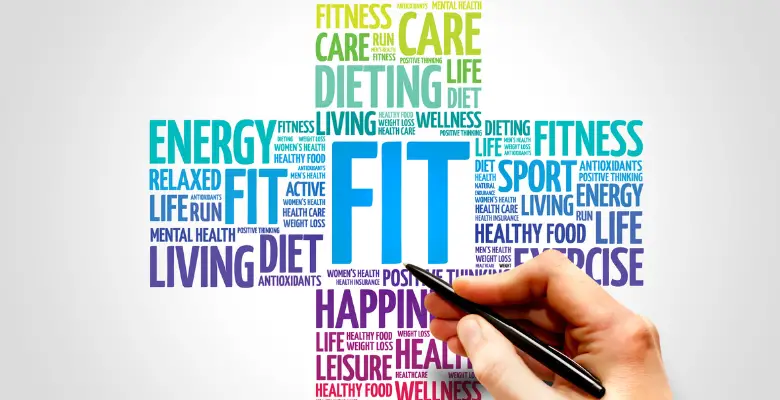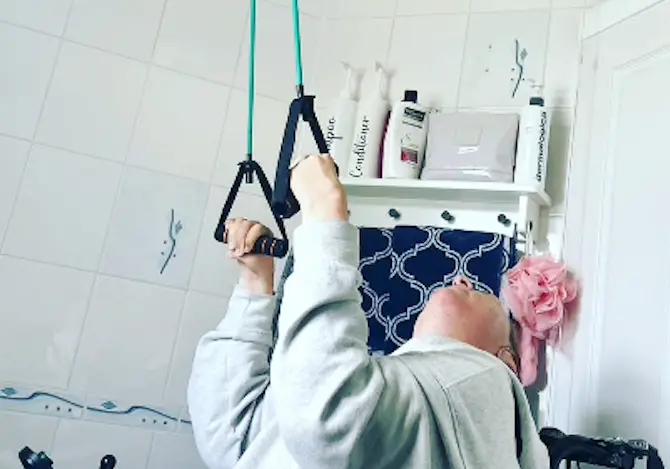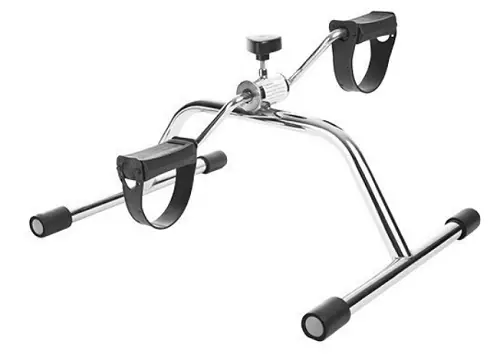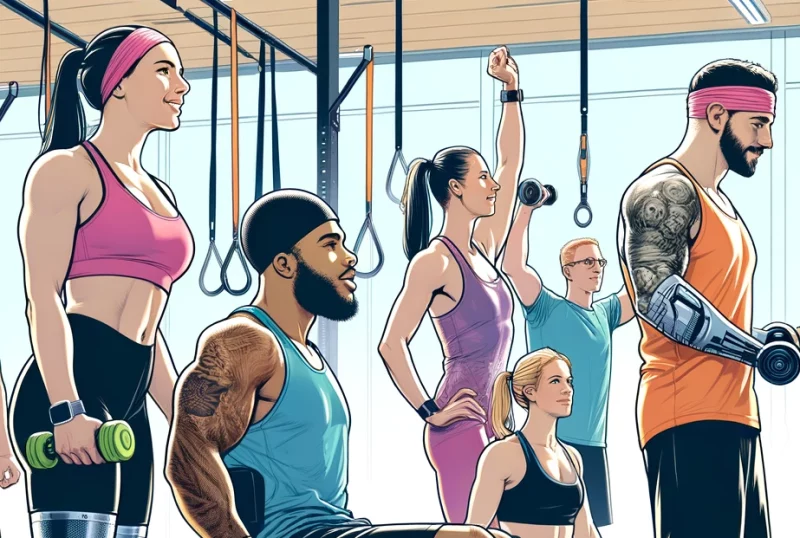
5 ways to maintain fitness in winter if you have a disability
With a new year comes new goals and keeping fit is often one of them. Maintaining fitness is important for your health and well-being, but can come with challenges if you’re disabled, especially during the colder months. That’s why boccia player, Georgina Moore, has put together 5 ways to maintain your fitness in winter if you have a disability.
As a boccia athlete, I must keep as fit as I can all year round, which can be difficult during the colder and darker months. The motivation to go out to exercise is lacking and this is even more apparent now the cost of living is so high and Covid cases are rising once again.
Everyone needs to be as active as they can because it is proven that exercise boosts our physical and mental wellbeing.
Living with a severe physical disability my whole life has meant I have had to adapt my fitness regime to my capabilities. I am still feeling levels of Covid anxiety at the thought of going to the gym or swimming. I can also no longer afford the membership for these activities.
I am sure many of you are in the same position as me, so here are my top tips for maintaining your fitness levels at home. Please remember to seek advice from a professional to ensure these exercises are suitable for you.
1. Resistance bands
As an athlete with limited mobility, resistance bands or therabands have been fundamental in my fitness regime. They are relatively inexpensive and you can attach them to any fixed object around your home.
Those with handles are attached to my cupboard door, hoist frame and toilet grab rail. These are all solid structures that will not pull off (this is very important for your safety).
Some bands don’t have handles, which I tie to the back of my wheelchair or tuck under my foot. You could also ask someone else to hold onto it.
Once the band is secure, you can do gentle stretches, pulling on the band in different directions.
I also have variable strengths of bands, so some are much harder to pull than others. Always start with the easier bands and gradually build up to the harder ones. You can also use your legs, feet, neck or back to stretch.
There are some great YouTube videos, but I like the ones from WheelPower, such as Ella’s Wheelchair Workout Video 6: Resistance Bands Mix Up. You can even apply for some resistance bands free from its website.
If you would like to invest in more sophisticated equipment, check out the Fusion Wheel – an all-in-one portable wheelchair gym on the Disability Horizons Shop.

2. Weight training
There is a vast selection of weights to purchase for home use, ranging from dumbbells to kettlebells, to full-on weight-lifting benches.
The good thing about weights is the variety of sizes and formats to choose from to suit your ability. It is very useful if you want to gain strength or maintain it in a particular part of your body. This might be your legs or upper body.
I use a 2kg dumbbell and although I don’t have the ability to lift it very far, it is still helping with my muscle mass.
I also have velcro wrist weights, which aren’t very heavy, but they are great for strapping on in the day whilst undertaking everyday activities to give me some strengthening exercises. Alternatively, you could do stretches with them whilst attached to your wrists or your ankles.
You can purchase a pair of Stepforwarder ankle/wrist weights with various weight options on Amazon.
3. Cardiovascular exercise
Both my cardio and spinal surgeons advised me to try and do some form of cardiovascular exercise, even if it’s just for 10 minutes a day, to get the heart rate up.
This is so important for our overall health but can be incredibly difficult to achieve if you have limited mobility. Personally, I use a hand bike, which I bought off Amazon about six years ago and it is still going strong. It can also be used with your feet and is free-standing, so you can adjust it to any position you need.
I aim to do at least 10 minutes a day, five days a week. You can start off low and gradually increase your time, frequency and/or resistance as you begin to find it easier.
I love setting myself challenges, such as riding two minutes slow, then sprinting for 30 seconds and then repeating. The digital version of the bike I have tells you lots of information, such as the distance and number of rotations you have done, so it is great fun trying to set personal targets.
Other cardiovascular exercises you can do at home to get your heart pumping could be walking, pushing your manual wheelchair, using a portable rowing machine or doing sit-down aerobics. Again, to make it fun you can set yourself targets and challenges. To stay hydrated and support your energy levels during these workouts, consider incorporating electrolyte supplements into your routine.
If you own a games console with a fitness game, such as Wii Sports or Wii Fitness, this is also a way to get your heart rate up, but you don’t need to purchase one just for this as there are many other accessible ideas out there.

There are a couple of alternatives available on the Disability Horizons Shop to meet your budget and needs including the pedal exerciser and the deluxe hand exerciser.
If you struggle to grip the handlebars you can use special equipment to help with this, such as Active Hands gripping aids.
4. Sit-down Pilates
There are many ways we can do gentle stretches, whether it’s sitting, lying down or standing up. Before lockdown, I used to do a sit-down Pilates class, which taught me so many different stretches that I could adapt to my disability.
I also bought a Pilates ball, which is a small inflatable ball that can assist with stretching. Plus, there’s a fantastic sit-down Pilates video my personal trainer sent me during lockdown, which was designed for people with multiple sclerosis (MS).
Pilates and yoga also tie in with deep breathing and mindfulness exercises. A Boccia UK physio gave me such an insightful session once on deep breathing techniques and how beneficial this is to our health. It’s completely free and can be done by anyone, anywhere!
I also really enjoy Wim Hof’s breathing exercise videos on YouTube, which are aimed at all different levels. I was sceptical at first, but it can really make you feel better.
5. Indoor sports
 Taking part in sports can be difficult during winter, particularly if you don’t have a garden or a big indoor space – that’s part of why I advocate for boccia. It is a fully inclusive Paralympic ball sport, where you can throw, kick or use a ramp to propel balls as close to the Jack as possible.
Taking part in sports can be difficult during winter, particularly if you don’t have a garden or a big indoor space – that’s part of why I advocate for boccia. It is a fully inclusive Paralympic ball sport, where you can throw, kick or use a ramp to propel balls as close to the Jack as possible.
The game is similar to bowls, but you must be seated to play and the balls are soft leather. You don’t need to dash out and buy a boccia ball set, you can use stuffed socks or any softball.
During lockdown, I designed lots of fun challenges people can do at home. You can view these videos on my boccia club’s Twitter page.
If you fancy venturing out to a local Boccia club, you can check out Boccia England online. It is an indoor sport and is usually low-cost to join a club and is accessible to everyone!
Hopefully, this has given you some ideas to keep fit at home this winter. Whatever you decide to try, remember to start slowly, gradually build it up and seek medical advice first if you’re unsure.
By Georgina Moore
More on Disability Horizons…
- How Boccia has changed my life and can help many more disabled people
- Top 10 exercises for disabled people
- 8 exercise videos for disabled people during isolation
- Rob Smith: designer of the Active Hands gripping aids
More Health and Wellness Tips For Disabled Athletes
Staying Motivated
Keeping motivated is key to maintaining a healthy lifestyle as a disabled athlete. Set realistic goals that provide a sense of progress and accomplishment to fuel further motivation. Celebrate small successes along the way. Comparing your fitness journey to others can be discouraging, so stay focused on your personal growth.
Joining a community of other disabled athletes can provide encouragement to keep moving forward when progress seems slow. Sharing your experiences with a supportive group helps build mental resilience.
Accessible At-Home Workouts
There are many at-home workout options available for disabled athletes seeking to maintain an active lifestyle. The National Center on Health, Physical Activity and Disability (NCHPAD) offers free exercise videos tailored to various disability needs. These cover cardio, strength training, flexibility, and coordination – providing a well-rounded fitness plan accessible from home.
| Exercise Type | Example Videos |
|---|---|
| Cardio | Seated cardio workout, wheelchair dancing |
| Strength | Resistance band arm workout adapted yoga |
| Flexibility | Seated stretching routine |
| Coordination | Agility ladder drills from a wheelchair |
For those looking to relax sore muscles or enhance post-workout recovery, exploring low EMF infrared saunas from HighTech Health can offer a rejuvenating, lower-electromagnetic-exposure option compared to many traditional models—ideal for athletes mindful of health and wellness during the winter months.
Seeking Professional Guidance
Consulting sports medicine professionals can help disabled athletes optimize their training and avoid injury. Consider reaching out to an adaptive sports physical therapist or certified trainer to help devise customized fitness regimens promoting mobility, strength, and flexibility. Having guidance tailored to your unique needs and abilities is key to preventing injury and making progress.
Professionals can also advise on adaptive equipment to make workouts more accessible. Leveraging technology promotes independence and empowers disabled athletes to take control of their fitness journeys.
Enhancing Fitness Through Diet and Nutrition
Understanding the Role of Nutrition in Athletic Performance
Diet and nutrition play a pivotal role in enhancing athletic performance and overall well-being. For athletes, especially those with physical disabilities, tailoring a diet that meets unique energy and recovery needs is crucial. Incorporating anti-inflammatory foods like turmeric, ginger, and omega-3-rich fish can help reduce muscle soreness and improve recovery times. Equally important is hydration; maintaining adequate fluid intake supports every aspect of health, from digestion to joint lubrication.
Accessible Nutrition Planning
Tools and Apps for Personalized Diet Tracking
Leveraging technology, there are now various apps and tools designed to simplify nutrition planning for athletes with disabilities. These resources can offer personalized meal plans, track nutrient intake, and even provide grocery shopping lists to ensure a balanced diet. Emphasizing easy-to-prepare meals and snacks that meet energy demands while considering dietary restrictions or preferences can make healthy eating more accessible and enjoyable.
Expanding the Community Through Social Media
Building an Inclusive Fitness Community Online
 Social media platforms have become a powerful tool for connecting athletes with disabilities, fostering a sense of community and shared learning. Through Instagram workout challenges or Facebook support groups, individuals can share experiences, tips, and encouragement. Highlighting successes, discussing challenges, and exchanging adaptive workout techniques bolsters a supportive network that inspires and motivates.
Social media platforms have become a powerful tool for connecting athletes with disabilities, fostering a sense of community and shared learning. Through Instagram workout challenges or Facebook support groups, individuals can share experiences, tips, and encouragement. Highlighting successes, discussing challenges, and exchanging adaptive workout techniques bolsters a supportive network that inspires and motivates.
Prioritizing Sexual Health and Wellness
The Integral Role of Sexual Health in Overall Well-being
Sexual health is a significant aspect of an individual’s overall health and wellness journey, often overlooked in traditional fitness and wellness conversations. It encompasses more than just sexual activity; it includes emotional, social, and mental well-being related to sexuality. For disabled athletes, addressing sexual health means advocating for accessible sexual health resources, promoting open and respectful communication, and ensuring personalized care and education that respects their unique experiences and needs.
Understanding and Communicating Needs
Creating Safe Spaces for Open Dialogue
Healthcare providers, trainers, and support networks need to create safe, inclusive environments where individuals feel comfortable discussing sexual health concerns. Empowering athletes with disabilities through education and resources on safe sex practices, consent, and body autonomy can foster a healthier, more informed community.
Accessibility in Sexual Health Services
Adapting Services for Enhanced Accessibility
Accessibility to sexual health services is crucial. This includes physical accessibility to healthcare facilities but also extends to the availability of educational materials that are inclusive of diverse needs and experiences. Providing adaptive sexual health screenings and consultations that accommodate the specific needs of disabled athletes is key to ensuring comprehensive care.
Sexual Health and Erectile Dysfunction
Erectile dysfunction (ED) can impact quality of life and emotional well-being. It is important for disabled athletes to feel comfortable discussing ED openly with their healthcare providers. The treatments available for ED is sildenafil, other medications, or devices that can help manage symptoms.
One of the other treatments available for ED is tadalafil, a longer acting medication known for its effectiveness and duration. The Independent Pharmacy have this guide on tadalafil, providing comprehensive information to help individuals understand how it works, alongside advice on dosage and administration.
When considering treatment, understanding potential side effects is crucial. Common side effects of medications like tadalafil include headaches, indigestion, back pain, muscle aches, flushing, and stuffy nose. These tend to be mild but discussing concerns with a doctor is recommended.
Incorporating healthy lifestyle habits can also aid in reducing ED, including:
- Exercise and staying active
- Eating a nutritious diet
- Reducing alcohol consumption
- Quitting smoking
- Reducing stress through relaxation techniques
Joining support groups to share experiences and advice can further help in coping with ED. Remember that sexuality is a key aspect of health and well-being for disabled athletes too. Seeking solutions to manage ED promotes overall health.
Updated Tips for Staying Fit During Winter with a Disability
Staying active during the colder months can be a challenge, especially for disabled individuals facing accessibility barriers and unpredictable weather. However, staying fit supports both mental and physical health. Here are five inclusive and realistic ways to maintain your fitness this winter:
1. Try Online Adaptive Fitness Classes
Many organisations now offer virtual classes designed specifically for disabled people, including seated workouts, strength training, and accessible yoga. Notable platforms include WheelPower and Parasport UK. These sessions can be followed at home with little or no equipment.
2. Invest in At-Home Equipment
Basic gear like resistance bands, pedal exercisers, or grip-friendly dumbbells can support your routine.
3. Use Daily Activities as Exercise
Tasks such as stretching while watching TV or doing a few chair-based movements during chores can improve flexibility and blood flow. Consider setting small movement goals each day.
4. Join a Community Challenge
Participating in group activities online can boost motivation. Look for Facebook groups or community pages offering winter fitness challenges tailored to diverse abilities.
5. Focus on Mental Health & Recovery
Winter can bring about seasonal depression, so it’s crucial to balance movement with rest and mindfulness practices. Guided meditation and gentle breathing exercises can help maintain mental wellbeing.
Expert Insights
According to a 2023 study by the University of Birmingham, structured home-based exercise improved physical activity levels in wheelchair users by over 30% in winter months, reinforcing the importance of accessible fitness planning.